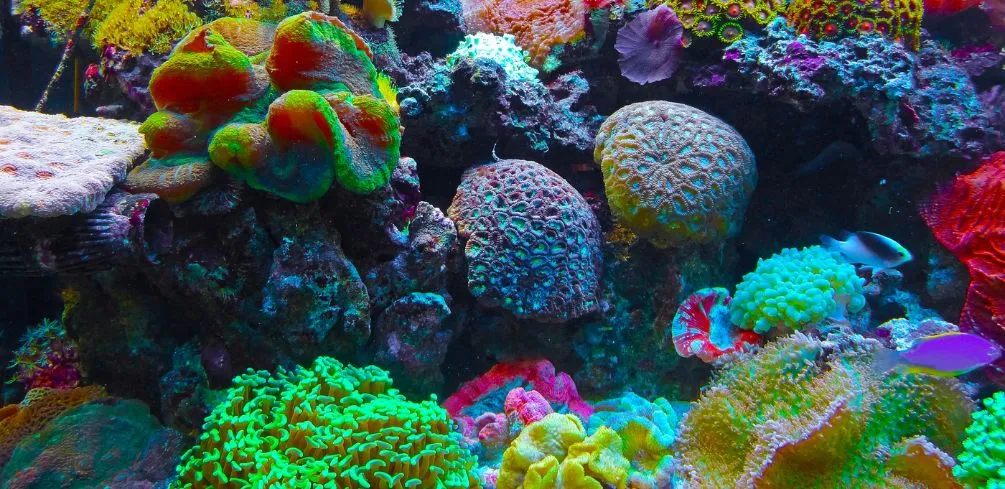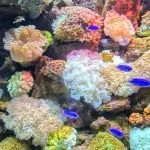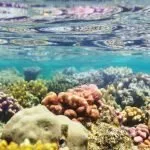When it comes to the world of marine life, corals are a fascinating subject. These beautiful organisms come in a vast array of shapes and colors, making them a favorite among aquarium enthusiasts and snorkelers alike.
However, with so many different types of corals out there, it can be challenging to know which ones are the most popular.
In this article, we’ll take a closer look at some of the most beloved corals among underwater enthusiasts. From the vibrant hues of Acropora to the unusual shapes of Goniopora, we’ll explore what makes these corals so special and why they continue to captivate people all over the world.
Whether you’re a seasoned scuba diver or someone who simply appreciates the beauty of nature, you’re sure to find something intriguing about these fascinating creatures. So let’s dive in and discover some of the most popular corals out there!
Acropora
Acropora is one of the most popular corals among reef tank enthusiasts. These corals have a wide range of colors and shapes, making them a beautiful addition to any tank. However, they require specific care to thrive in a home aquarium.
One important factor for the health of Acropora is proper tank lighting. They need strong lighting to support their photosynthetic needs and growth. LED lights are commonly used in reef tanks as they provide the right spectrum and intensity for these corals.
Additionally, water current is also essential for their survival as it helps bring nutrients and oxygen to the coral. A moderate to high flow rate is recommended for Acropora, but it’s important not to blast them with too much current as this can cause damage or even death.
Goniopora
Moving on from the popular Acropora, let’s dive into another fascinating coral – Goniopora.
This type of coral is known for its captivating beauty and unique anatomy that sets it apart from other corals.
Goniopora has an intricate anatomy with multiple polyps on each branch, giving it a distinct flower-like appearance.
These polyps have small tentacles that are used to capture food particles in the water.
To care for Goniopora, it is important to ensure that the water parameters are stable and consistent.
They require moderate to high lighting and moderate water flow to thrive.
It is also essential to feed them regularly with planktonic foods and avoid touching or moving them as they are delicate creatures.
Taking proper care of Goniopora can lead to a stunning addition to any reef aquarium.
Euphyllia
Euphyllia corals are some of the most popular and sought-after species among reef-keeping enthusiasts. These corals have a unique structure, resembling a flower with tentacles that sway in the water currents.
Euphyllia comes in various colors, such as green, purple, pink, and gold. They are easy to keep and do not require any special attention or care requirements.
When it comes to tank placement, Euphyllia corals prefer moderate to high lighting conditions and moderate water flow. It is best to place them on the bottom of the tank or in low-flow areas.
Additionally, they thrive in stable water parameters with a pH range of 8-8.4 and a temperature between 74-78°F (23-26°C).
Regular water changes and proper filtration are essential for their well-being.
In summary, Euphyllia corals are stunning additions to any reef aquarium due to their unique structure and vibrant colors. With their ease of care requirements and specific tank placement preferences, these corals make perfect choices for beginner or experienced hobbyists alike.
Montipora
The Montipora coral is a true marvel of the ocean, with its intricate web of branching and colorful polyps that can leave any observer mesmerized. It’s no wonder why it has become one of the most sought-after corals in the hobbyist world.
The Montipora’s unique beauty is not just skin deep; it also offers an array of benefits to any tank it inhabits. Montipora Care is relatively easy as long as you provide it with proper lighting and water conditions. With enough light, the Montipora will thrive and grow exponentially, creating a beautiful centerpiece for your aquarium.
There are many different types of Montipora corals, each offering its own unique characteristics and colors. Some popular types include:
- Montipora Digitata: A fast-growing coral with slender branches that resemble fingers.
- Montipora Capricornis: A plating coral that grows in circular shapes and comes in various colors.
- Montipora Setosa: A branching coral that has a fuzzy appearance due to its tiny polyps.
- Montipora Undata: A boulder-like coral that features thick ridges and valleys on its surface.
These diverse options make it easy to find a type of Montipora that will fit perfectly into your tank’s aesthetic.
Overall, adding a Montipora coral to your collection is sure to bring joy and beauty to your aquatic environment without requiring too much maintenance or effort on your part.
Zoanthids
Zoanthids are a popular type of coral that is often found in reef aquariums. These corals are known for their bright and vibrant colors, making them a favorite among many aquarists. Zoanthids come in various shapes and sizes, ranging from small button-like polyps to larger colonies with multiple polyps.
One interesting aspect of zoanthids is their ability to cohabitate with other types of marine organisms. In particular, they form symbiotic relationships with certain species of algae, which can help provide them with essential nutrients.
These algae are known as zooxanthellae and live within the tissue of the coral. As they photosynthesize, they produce oxygen and organic compounds that the coral can use for energy. In return, the coral provides shelter and protection for the algae, allowing them to thrive within its tissue.
This mutually beneficial relationship is a key reason why zoanthids are such an important part of many reef ecosystems.
| Type | Color | Growth Rate | Price ($) |
|---|---|---|---|
| Armor of God | Green/Purple/Yellow/Red | Slow-Medium | 50-150 |
| Dragon Eye | Red/Green/Yellow/Orange | Fast | 30-100 |
| Utter Chaos | Purple/Green/Blue/Red/Pink/Yellow | Medium-Fast | 80-200 |
| Rastas | Green/Purple/Yellow/Red/Blue/Brown | Fast-Medium | 40-120 |
As you can see from the table above, there are several different types of zoanthids available in the aquarium trade. Each variety has its own unique coloration and growth rate, making them a great addition to any reef tank.
However, it’s important to remember that while these corals may be easy to care for in some respects, they still require proper water chemistry and lighting conditions to thrive. With the right care and attention, zoanthids can provide a beautiful and fascinating addition to any aquarium.
Frequently Asked Questions
What Are The Ideal Water Parameters For Maintaining These Corals?
To maintain healthy corals, it’s essential to understand their ideal water parameters. These include proper lighting requirements and water flow.
Lighting is crucial for photosynthesis, which provides the coral with energy and nutrients. It’s recommended to have a lighting system that mimics natural sunlight as closely as possible.
Water flow is also critical for corals’ health since it helps distribute nutrients and oxygen more evenly throughout the tank. The ideal water flow depends on the coral species you’re keeping but generally should be moderate to high.
Therefore, maintaining a balance between these two factors is crucial to ensure healthy coral growth and longevity.
Can These Corals Be Kept Together In The Same Tank?
Picture a vibrant underwater world where corals dance together in harmony, creating a breathtaking spectacle.
But can these corals be kept together in the same tank?
Well, it all depends on their lighting requirements, water flow, and stocking levels. Some species require high-intensity lighting, while others thrive under moderate light.
Water flow is also crucial as some corals need strong currents while others prefer gentle ones.
When it comes to stocking levels, it’s essential to ensure that there’s enough space for each coral to grow and flourish without competing for resources.
With the right balance of these factors, you can create a stunning reef ecosystem where corals complement each other like pieces of a puzzle.
How Do You Properly Acclimate These Corals To A New Tank?
To properly acclimate corals to a new tank, it’s important to take into consideration their lighting requirements and water flow.
First, make sure your lighting system is appropriate for the type of coral you have. Some corals require high levels of light, while others prefer lower levels. Try to mimic the lighting conditions they were previously in as much as possible before slowly increasing or decreasing the intensity over time.
Secondly, ensure that the water flow is suitable for each coral species. Some prefer strong currents, while others thrive in slower-moving water. Gradually increasing the flow rate can help them adjust to their new environment without causing stress or damage.
Remember to be patient and monitor them closely during this process to ensure they are adapting well.
What Are Some Common Diseases Or Pests That Can Affect These Corals?
As the saying goes, an ounce of prevention is worth a pound of cure. This holds especially true when it comes to protecting your beloved corals from diseases and pests.
Environmental stressors such as fluctuations in temperature or water quality can weaken a coral’s immune system, making them more susceptible to disease. But with proper disease prevention measures like quarantining new additions and maintaining stable tank conditions, you can minimize the risk of outbreaks.
It’s essential to stay vigilant and educate yourself on common coral illnesses and pests so that you can quickly identify and treat any issues that arise. Remember, taking proactive steps to protect your corals will lead to a more vibrant and healthy aquarium environment for all its inhabitants.
Can These Corals Be Fragged Or Propagated, And If So, How?
If you’re wondering whether corals can be fragged or propagated, the answer is yes!
There are various fragmenting techniques and propagation methods that can be used to create new coral colonies.
One common method is called ‘fragging’, which involves cutting a piece of coral and attaching it to a rock or substrate.
Another method is through sexual reproduction, where male and female gametes are released into the water column, and fertilization occurs.
Other techniques include grafting, budding, and tissue culture.
It’s important to note that these methods should only be done by experienced hobbyists or professionals to ensure proper handling and care for the corals.
Conclusion
In conclusion, keeping corals in a home aquarium can be a rewarding and beautiful experience. However, it is important to remember that different species have different needs in terms of water parameters, lighting, and nutrient levels.
The most popular corals include the hardy and colorful varieties such as Montipora, Acropora, and Zoanthids. When setting up a tank with these corals, it is crucial to ensure that the water parameters are within their ideal range.
Additionally, it is important to acclimate them properly when introducing them to a new environment. This will help prevent any stress or shock that may lead to disease or pests.
While these corals can be kept together in the same tank, it is important to monitor for any signs of aggression or competition. And finally, fragging or propagating these corals can be a fun way to expand your collection or share with other hobbyists.
In summary, keeping popular corals requires attention to detail and patience but the end result can be truly breathtaking. So dive in and explore the wondrous world of coral reefs from the comfort of your own home!





